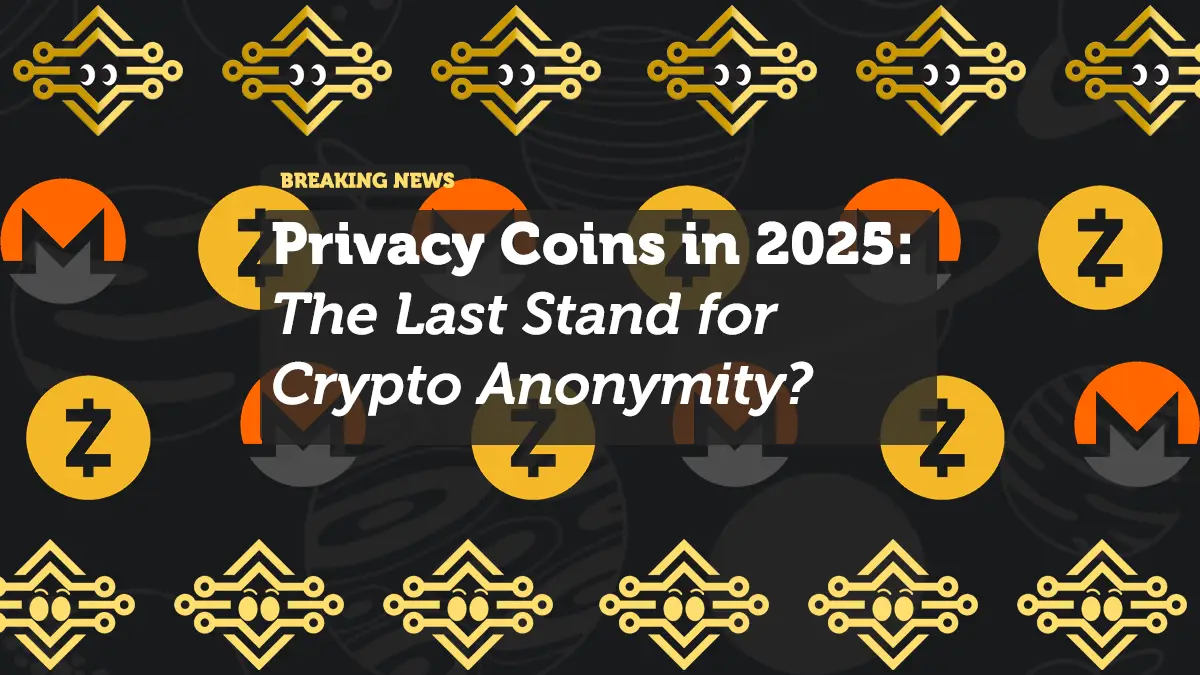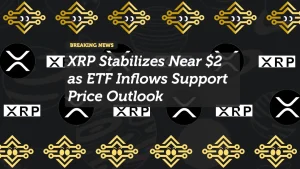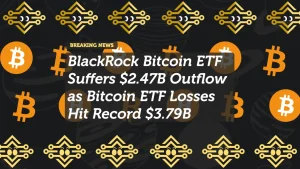
Privacy Coins in 2025: The Last Stand for Crypto Anonymity?
Privacy coins are cryptocurrencies designed to obscure transaction details such as the sender, receiver, and amount. Unlike Bitcoin and Ethereum, which record transactions on a transparent ledger, privacy-focused assets like Monero (XMR), Zcash (ZEC), and Pirate Chain (ARRR) use advanced cryptographic techniques to keep transactions hidden.
For privacy advocates, these coins represent financial sovereignty—offering the digital equivalent of cash in an untraceable deal. Critics, however, see them as tools for illicit activity, creating an ongoing debate about whether privacy should be a fundamental right in crypto.
Why Privacy Coins Are Gaining Attention in 2025
1. Increased Blockchain Surveillance
Governments and blockchain analytics firms are ramping up efforts to trace crypto transactions. Events like recent large-scale exchange hacks have highlighted how transparent blockchains can be tracked. Privacy coins are now being seen as the last stronghold for users seeking financial anonymity.
2. Market Performance and Safe Haven Status
Despite volatility in major cryptocurrencies, Monero has steadily gained value in 2025. With Bitcoin and Ethereum experiencing swings, investors are turning to privacy coins as a hedge, leading to increased trading volume and adoption.
3. The Rise of Decentralized and Peer-to-Peer Trading
While many centralized exchanges have delisted privacy coins due to regulatory pressure, decentralized exchanges (DEXs) and peer-to-peer platforms have stepped in to fill the gap. The shift toward DEX-based trading has made privacy coins more resilient than ever, as users can now swap assets without KYC or oversight.
4. Technological Advancements in Privacy
New upgrades are enhancing privacy coin security and efficiency:
- Monero’s full-chain membership proofs (expected mid-2025) will further improve transaction obfuscation.
- Zcash’s Halo upgrade eliminates the need for trusted setups, making its zero-knowledge proofs more decentralized.
- Mimblewimble-based coins (such as Grin and Beam) are pioneering new transaction compression methods, improving scalability without sacrificing privacy.
These improvements ensure privacy coins remain at the cutting edge of cryptographic security.
How Privacy Coins Work: The Technology Behind Them
Monero (XMR) – The Leader in Privacy
Monero achieves full anonymity through:
- Ring Signatures: Transactions are mixed with others, making it impossible to identify the sender.
- Stealth Addresses: Each transaction creates a unique address, hiding the recipient’s identity.
- RingCT (Ring Confidential Transactions): Conceals the transaction amount, ensuring complete privacy.
Zcash (ZEC) – Selective Privacy with Zero-Knowledge Proofs
Zcash provides the option to either make transactions transparent (like Bitcoin) or private using zk-SNARKs (zero-knowledge proofs). This allows users to prove a transaction occurred without revealing any details.
Pirate Chain (ARRR) – Maximum Privacy with zk-SNARKs
Pirate Chain takes Zcash’s privacy model a step further by enforcing 100% private transactions, removing the option for transparency entirely.
A Real-World Use Case: Monero in Action
Imagine a whistleblower in a repressive country who needs to fund an independent news outlet while staying anonymous.
- They convert fiat into Monero through a decentralized exchange (DEX), avoiding KYC.
- Their Monero transaction is shielded using ring signatures and stealth addresses, making tracking impossible.
- The funds arrive at a secure wallet, enabling them to finance operations without exposure to government surveillance.
This scenario illustrates why privacy coins are favored not just by those seeking anonymity for ethical reasons, but also in regions where financial censorship is a reality.
The Ongoing Debate: Are Privacy Coins a Tool for Freedom or Crime?
Privacy coins have sparked global controversy, with arguments on both sides:
Arguments in Favor:
✔ Financial Freedom: Users should have the right to transact privately, just as they do with cash.
✔ Security Against Tracking: Protects individuals from hackers, oppressive regimes, and unwanted surveillance.
✔ Decentralization Matters: Unlike bank transactions, privacy coins operate on trustless, open-source networks.
Arguments Against:
⚠ Money Laundering Concerns: Criminal groups have used privacy coins to hide illicit funds.
⚠ Regulatory Bans: Governments in the U.S., EU, and Japan have pressured exchanges to delist privacy coins, making them harder to access.
⚠ Slow Adoption: With fewer major exchanges supporting them, mainstream adoption remains a challenge.
The debate remains ongoing, with privacy advocates defending financial anonymity while regulators push for compliance and traceability.
Privacy Coins and the Global Regulatory Landscape
Privacy coins have been targeted by regulatory bodies worldwide:
- United States: Major exchanges like Coinbase delisted Monero in 2023 due to anti-money laundering (AML) concerns.
- European Union: Proposed bans on privacy coins under new AML directives.
- Japan: Completely banned privacy-focused cryptocurrencies from licensed exchanges in 2019.
Despite these restrictions, privacy coins remain accessible through decentralized exchanges and peer-to-peer trading networks, highlighting the resilience of privacy-focused crypto assets.
What’s Next for Privacy Coins in 2025 and Beyond?
1. Increasing Demand Amid Rising Surveillance
As governments implement stricter tracking tools, the demand for privacy coins is likely to grow. Users who prioritize financial anonymity will continue to seek alternatives that allow them to transact outside of surveillance-heavy environments.
2. New Privacy Technologies and Innovations
Developers are working on improved privacy methods that could make tracking even more difficult while enhancing scalability and efficiency. Expect further advancements in zero-knowledge proofs and new transaction obfuscation methods.
3. Potential Market Expansion
Privacy coins currently have a combined market cap of $3 billion, but estimates suggest this could grow to $50 billion by 2030 if adoption increases and regulatory roadblocks lessen.
4. Integration with Layer-2 and DeFi Protocols
New privacy-focused layer-2 solutions may allow users to retain financial secrecy while interacting with decentralized finance (DeFi) applications.
Conclusion: The Future of Financial Privacy in Crypto
Privacy coins remain a divisive but essential part of the crypto ecosystem. While governments attempt to regulate and restrict them, their fundamental value as a tool for anonymous transactions and financial sovereignty ensures their continued relevance.
For privacy-conscious investors and users, the challenge will be navigating regulatory roadblocks while leveraging decentralized trading platforms to maintain access. Whether privacy coins will thrive or be forced into the shadows depends on how the next wave of regulations unfolds.
One thing is clear: privacy in crypto is not dead—it’s evolving.
















